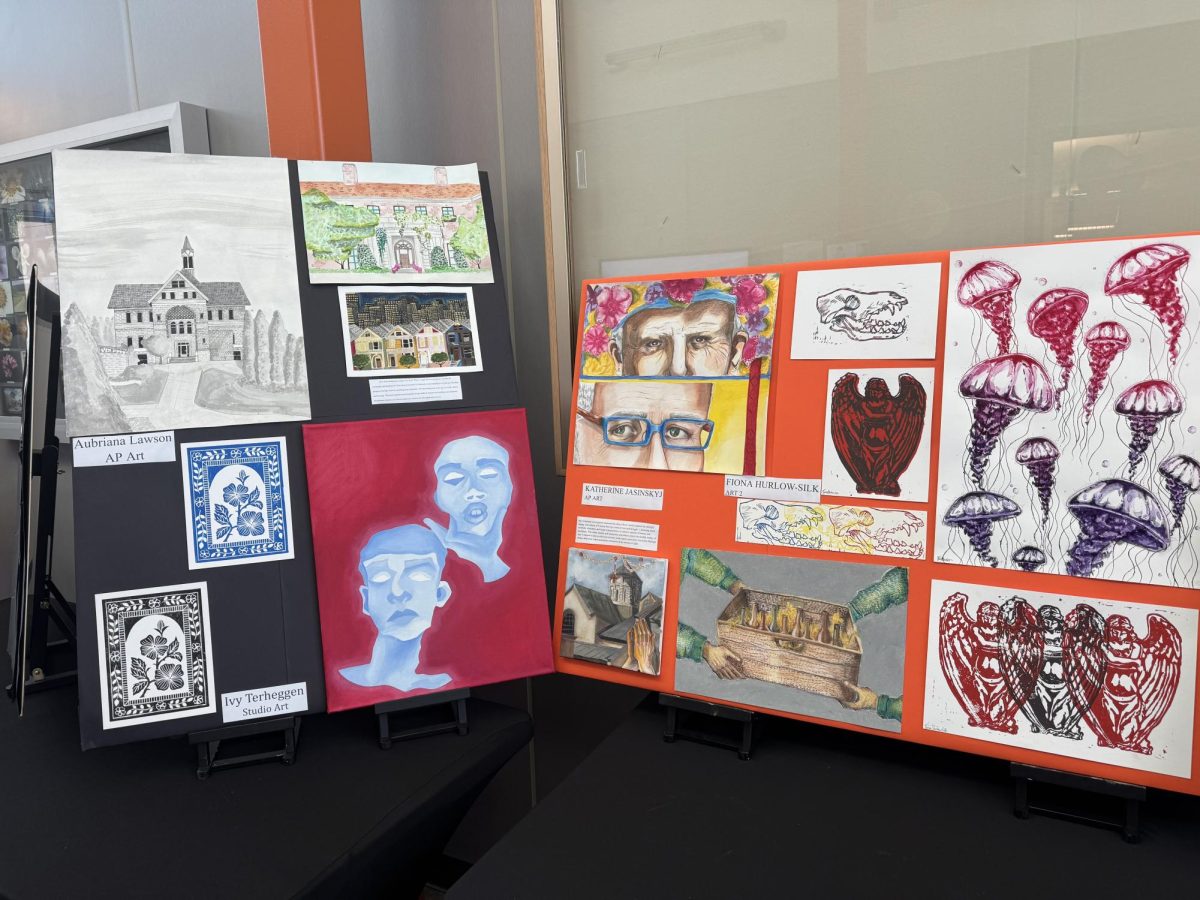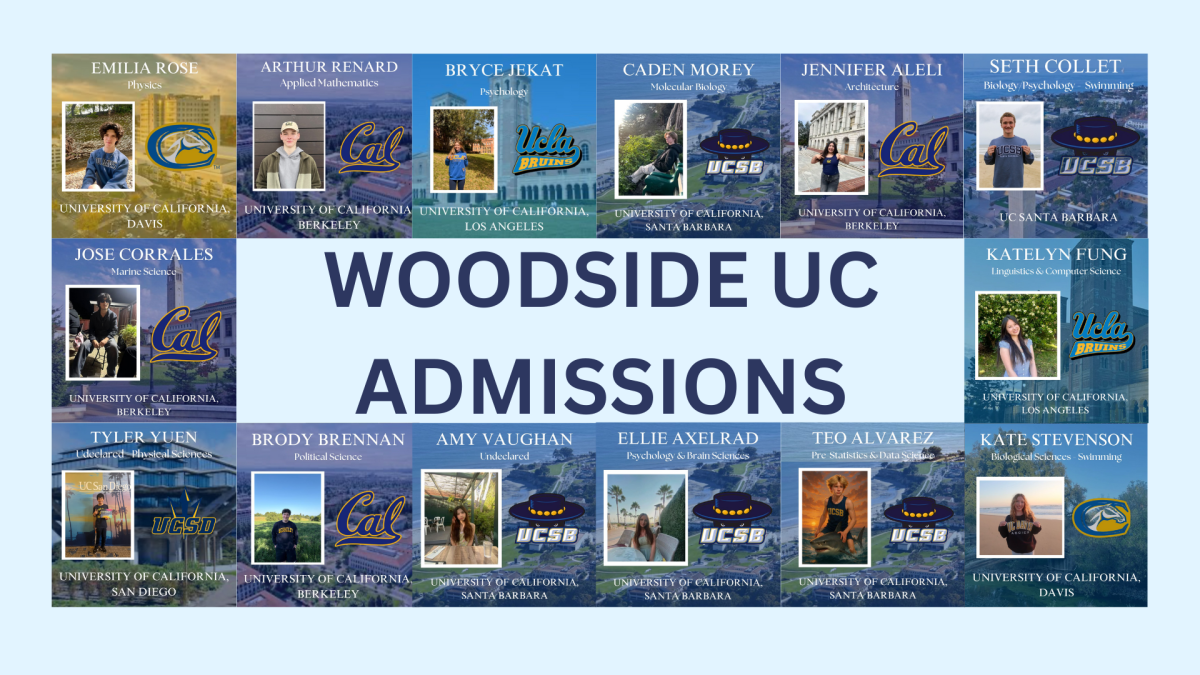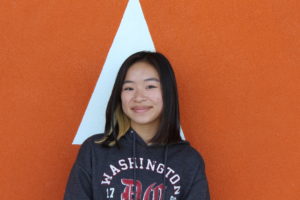French, Latin, Mandarin, and Spanish are the four languages that Woodside High School offers, but should there be more?
Across the U.S. the eight most frequently taught languages (in order of frequency) are Spanish, German, Latin, Mandarin, American Sign Language, Italian, and Japanese. However, excluding English, the eight most commonly spoken languages in the U.S. are Spanish, Chinese (more dialects than just Mandarin), Tagalog, Vietnamese, French and French Creole, Arabic, Korean, and Russian. The languages taught in schools are either lacking or heavily skewed from the reality of America’s common languages. Understandably, schools may not have the funds or ability to teach all of them, but there are no simple or easy ways for students to learn a language outside of the four.
Annabelle Hopkins, a Woodside High School student, takes American Sign Language (ASL) off-campus, since Woodside’s language offerings didn’t aid in her goals for the future or provide enough interest or appeal over ASL.
“I want to go into pediatric occupational therapy, so [learning ASL] would help me with that, because I’m working with people who might need ASL,” Hopkins said.
Her lack of interest and direct connection to French, Latin, Mandarin, or Spanish furthered her motivation for taking the ASL classes on her own time.
“[ASL is] very theatrical, and I love theater… It’s a very physical language, and I just connected to that much more than I did when I took Spanish,” Hopkins emphasized.
Many students share Hopkin’s dilemma of not connecting to the four offerings. Whether this was due to the language of their family or just general interest, many side with Freshman Madeline Lee. She would rather take the language her family speaks, Cantonese, but had to settle for taking Mandarin.
“It’s the closest thing to what the rest of my relatives speak,” Lee explained.
Often over the span of three to four years, students dedicate several hours a week to learning and studying a language in school, which is often a language they grudgingly settled on. Some feel that the methods schools implement to teach the languages aren’t beneficial, and either the language itself or the materials taught aren’t helpful past high school.
“[Mandarin] could be beneficial depending on where I live when I grow up, but my parents don’t speak it,” Lee said. “My extended family sort of speaks it but not really… Unless I work somewhere where customers need translating, [I probably won’t use Mandarin].”
Settling for languages is a common trend seen in even more students across multiple languages. Sophomore Haiden Barnuevo agrees that students would want to learn even more languages, like German and Japanese (which are often seen at other schools). However, he decided to take Spanish.
“I took Spanish just because a lot of my family members from the Philippines speak Spanish,” Barnuevo said. “It’s also pretty easy, because a lot of Tagalog words are also from Spanish. So it’s really easy for me to understand and learn.”
If students like Hopkins wish to take a different language, they must undergo a strenuous and tedious process.
“You have to get a ton of forms signed, and then get the school to sign off on it saying that they can give you credit for it,” Hopkins briefed. “And that has to be approved by multiple people, and then get signed by an AVP, and… your parents [too]. Then, once you finish the class, you have to get four more things signed. It’s just this whole process, and it’s really difficult.”
However, the challenges don’t end at the hurdle of actually approving and getting credit for the class (an off-campus class must be an accredited institution, UC approved, and approved by the district). The extra hassle and effort that falls on the student taking the actual course is something students don’t have to face when they take one of the four Woodside courses.
“The first year I did it, it was a video, so it wasn’t one-on-one or anything,” Hopkins detailed. “That was maybe an hour a week. But then the second year I did it, it was a community college course, which was four or five hours a week after school online. [The class] was really hard, especially because I was already doing Zoom classes. And then this year, it’s one-on-one through an online high school…I keep changing it because it’s impossible to get.”
Taking an online course requires a lot of effort, and Woodside’s limited options force students towards extra time and work. Students are also often subjecting themselves to years of learning something they don’t want to learn, or something that won’t benefit them beyond their diploma.
However, from the standpoint of teachers, Julieta Gomez, Head of the World Language Department, explains the reasoning behind why they teach the four languages, and why there are only four.
“The four languages; I guess they’re the most popular, the most requested, ” Gomez said. “Of course we have Spanish; it’s very popular, and also we have a huge Spanish speaking population…The other ones, it’s just a request. Like Latin, for example.”
Staffing and finding teachers are difficult, as is having enough students to fill a class. However, if these things are achieved, it’s another process to approve a new course.
“I think we have to request [the course] and they will have to decide if that will be something that the whole school district agrees [with], what the teachers think about it, and then from there, decide if we could add it,” Gomez informed.
Across the district and many schools in our area, including private schools, about four to five languages are offered at most.
“It’s kind of the same [languages],” Gomez said. “Some schools, for example, do not offer Latin. I know that MA does, but not Sequoia…but it’s mainly the same across,”
In more detail, Menlo High School, for example, offers the same languages as Woodside, while Saint Francis High School only offers French, Mandarin, and Spanish. As for public schools, there isn’t a great difference. Sequoia High School only offers two languages: French and Spanish. Across the San Mateo Union High School District (SMUHSD), French, Italian, Japanese, Mandarin, and Spanish are offered. The benefits and experience of language classes greatly differ from other core classes like math and science, so it’s important to offer a variety.
“You not only learn a language, but you learn the culture and you learn to look at things in a different way, with a different perspective,” Gomez said.
Since students are committing to more than just any old class, they should have the ability to learn about more than four cultures and perspectives. Learning a second language is an important and useful skill. Students should be able to commit themselves to any language of their choice, whether it’s easily done through school, or made more accessible off-campus.
“I feel like there will be a lot more languages people want to learn other than Spanish, Mandarin, Latin, and French,” Barnuevo said.












